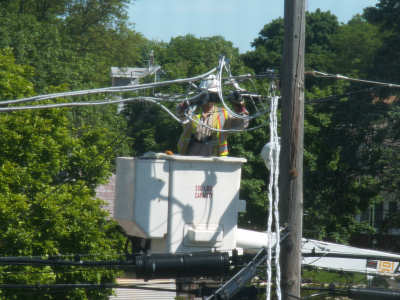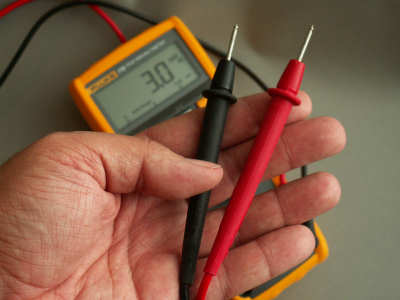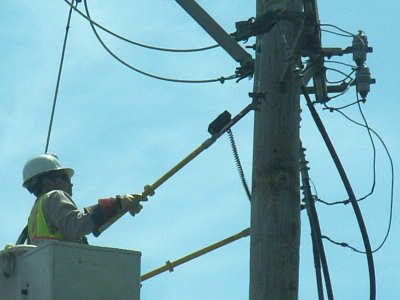(Links to Chapter 1, Chapter 2, and Chapter 3.)
When I first called ComEd’s customer service center to complain about the electricity in my house, I wasn’t even sure that 135 volts AC was out of the accepted range for electric service. While several consumer web sites have information about electricity costs and rules for disconnection, the web has surprisingly little about electrical service quality and voltage standards.
(Thanks to Firefly Digital Media for a comment clarifying that “135V is indeed WAY too high, and it’s not a matter of ComEd WANTING to fix it. It is a violation of standards that can threaten public safety.”)
I guess my easy-going telephone personality and my hesitancy over whether this was even a problem caused ComEd to not take me very seriously. As of Tuesday morning, a week and a half since I first brought the problem to ComEd’s attention, the household electricity was coming in at 137 Volts AC.
It was time to use my nuclear option: I let my wife handle it.
You see, I don’t like putting pressure on customer service people. I hate it when people put me on the spot for things, so I’m reluctant to do it to other people.
My wife, on the other hand, does customer service for a living. She’s worked in call centers, managed call centers, and set up call centers. Providing good customer service is a very big part of her job. So when she calls other customer service centers and they don’t solve her problem, she shows no mercy. Without making threats or being unfriendly, she makes it absolutely clear that they’re not going to get rid of her without doing exactly what she wants.
One hour after her call to ComEd, I spotted this guy out the window:
 |
After checking our power line directly, he backed the truck up to the transformer drum that serves my building and checked something there. Then he proceeded up along the distribution lines, checking one transformer on each high-voltage line that serves each block, until he got to the last pole where the lines go underground. (Yes, I followed him.) Then he drove off to do something else.
About an hour and a half later I’m sitting at my computer when I hear the UPS click and the lights get dim. I notice these brief brownouts a couple of times a month. Except this one is lasting longer than they usually do, and although the UPS clicked like it always does, it isn’t buzzing with 60Hz hum from supplying battery power to the computer…
Oh.
I pull out the DMM and check an outlet. 122 volts.
So when I called ComEd, nothing much happened for a week and a half; but when my wife calls ComEd at 9am, they fix the problem by noon.
Sigh.
As an aside, here’s something that makes me glad I don’t have to troubleshoot electric power distribution systems:
I’ve been measuring the household voltage by sticking the probes on my multimeter into the two slots in an ordinary outlet on the wall. Here’s a picture of the probes:
 |
As you can see, they’re about 5 inches long and have maybe 1/8 inch of insulation. That’s plenty for measuring the household 120 volts (or so). In fact, the meter and probes are rated for 1000 volts.
Now take a look at the probes the ComEd technician was using to check the high-voltage distribution lines:
 |
Damn, that must be a lot of voltage.
Quote:
“Damn, that must be a lot of voltage.”
About 12,500 volts!